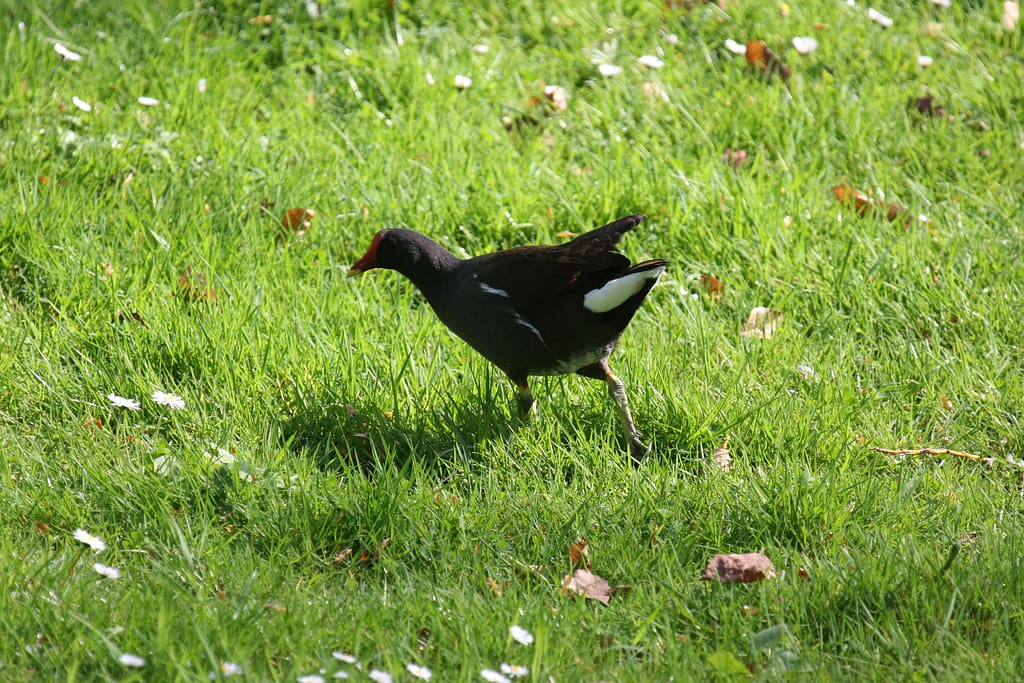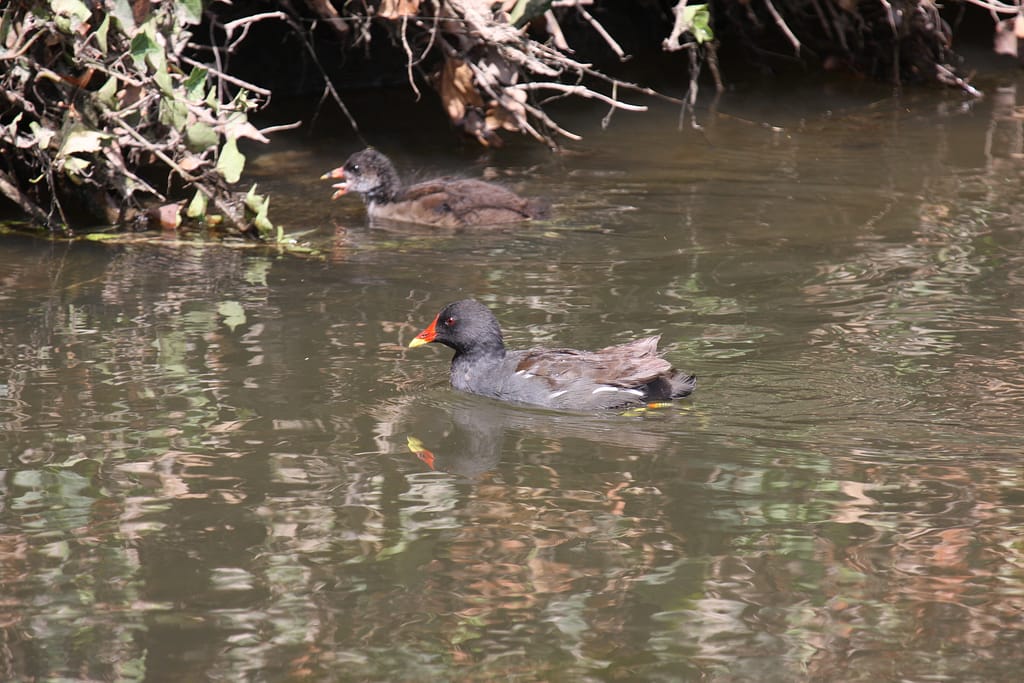You almost always see common moorhens on Tapijn. They swim in the Jeker or walk along the bank in search for food. Yet they lead a somewhat less conspicuous existence than coots. With their long-toed swamp legs they can walk through dense reeds, over water plants and over muddy ground.
Latin name:
Gallinula chloropus
Characteristics:
The common moorhen is a less heavily built marsh bird than the coot. Its plumage is predominantly black, with a somewhat dark brown back and white spots along the flanks. Common moorhens have a nice red blaze and beak with a yellow tip. They have light green legs with long toes, so they can walk on water and marsh vegetation. When common moorhens walk or swim, their tail feathers are pointed upwards. The undertail coverts are white, which makes them stand out well. Young moorhens follow these “white” signals. Like coots, moorhens make different sounds. Especially the trumpet-like courtship sound can be heard in the spring.
Moorhens are often confused with coots. Coots are heavier built than moorhens and their plumage is completely black. The most visible difference is the beak. In coots it is completely white, just like the blaze. The legs of coots are green, but the toes are grey and more lobed than those of moorhens.
Reproduction:
The bowl-shaped nest of moorhens is built in dense riparian vegetation and consists of water plants. It is much more hidden than the nest of coots. The battle between males for a territory and females is sometimes fierce. The breeding season of moorhens runs from March to August. They have 1 to 3 clutches of 5 to 9 eggs. They breed 19 to 22 days before the young hatch. They crawl right out of the nest. Boys from previous broods often help with the care of new young. After about 49 days young moorhens can fly.
Food:
Moorhens eat aquatic plants, grasses, insects, spiders, tadpoles, but sometimes also eggs of other birds.

